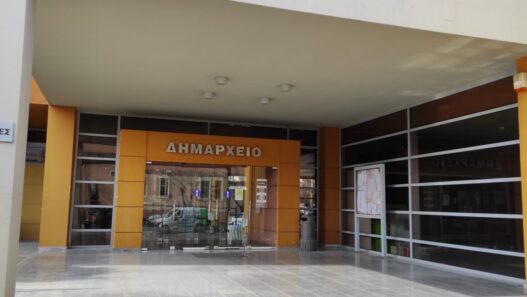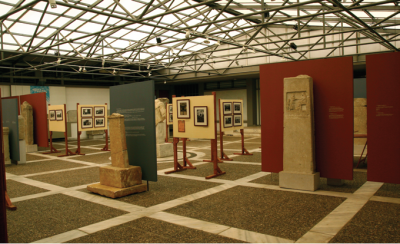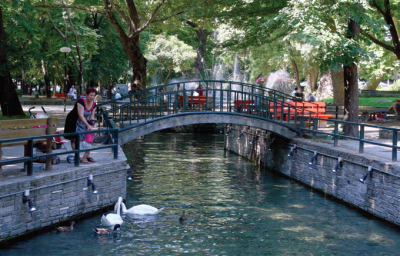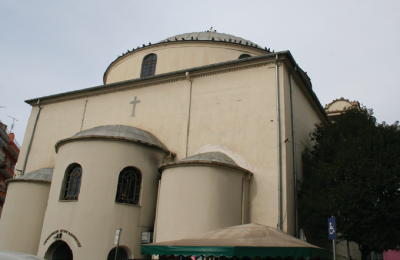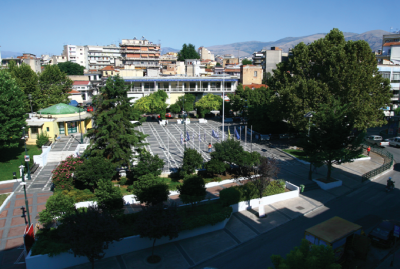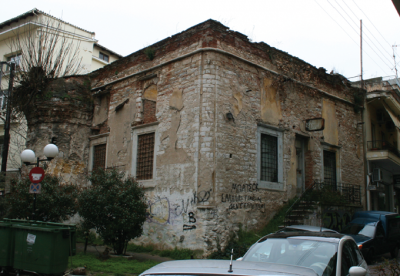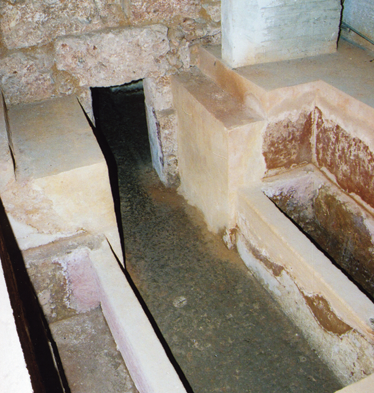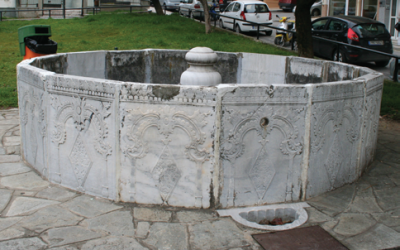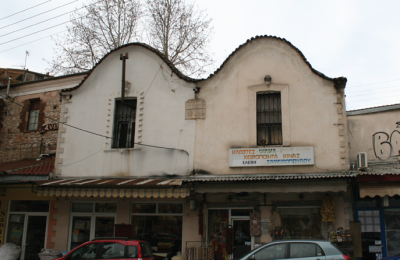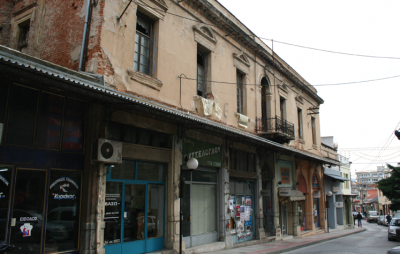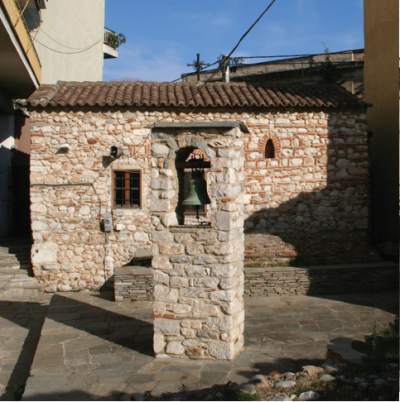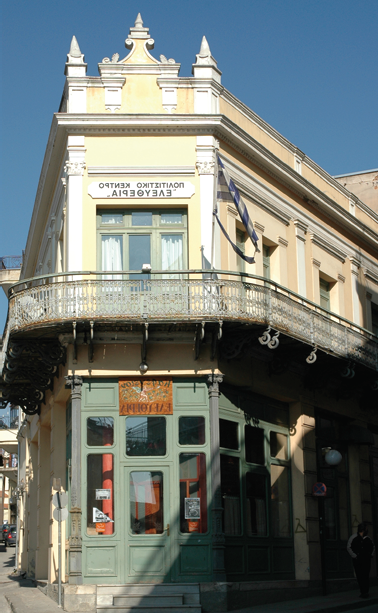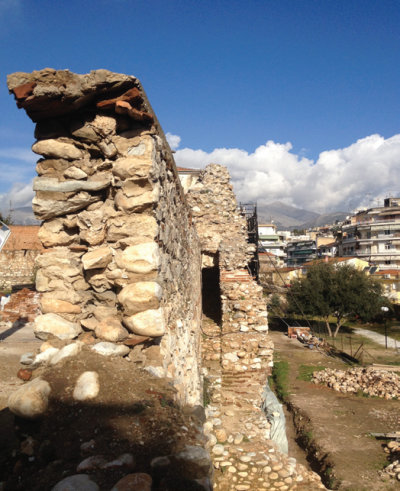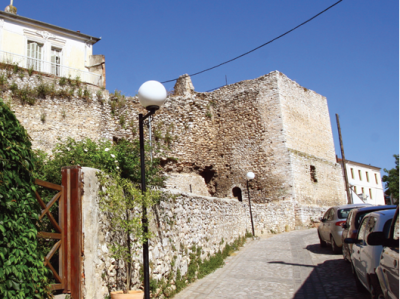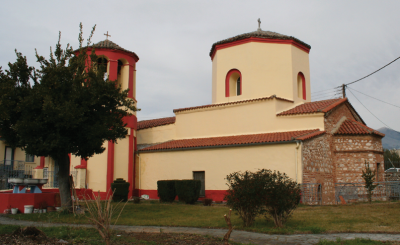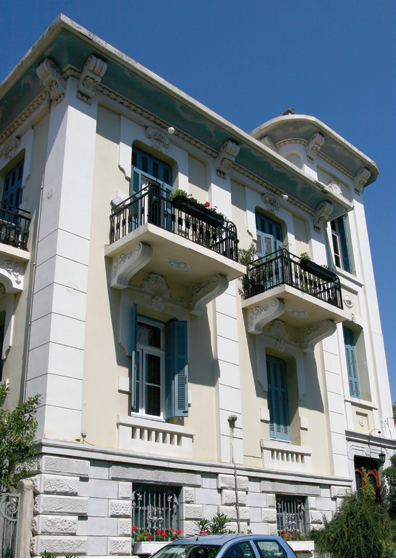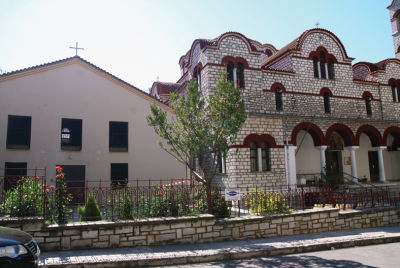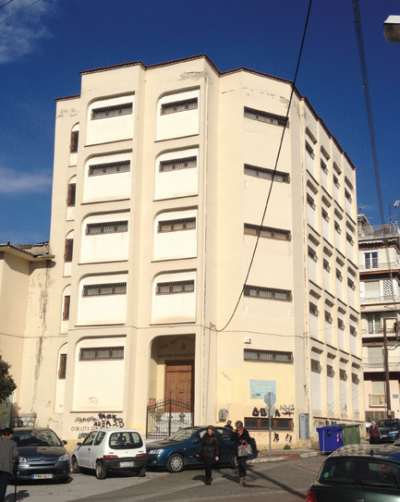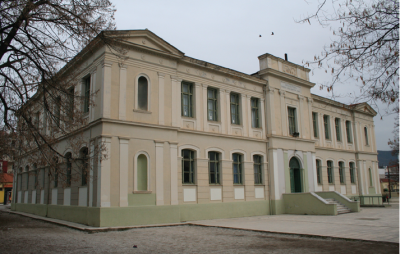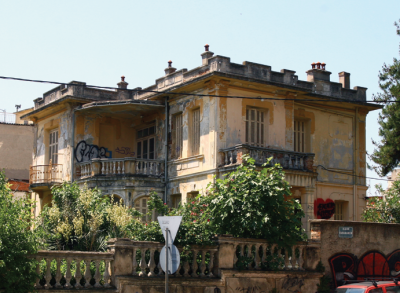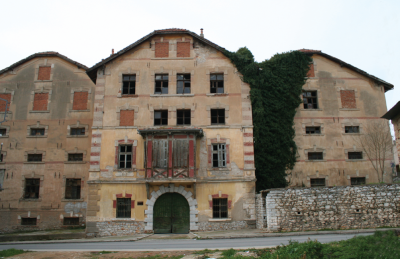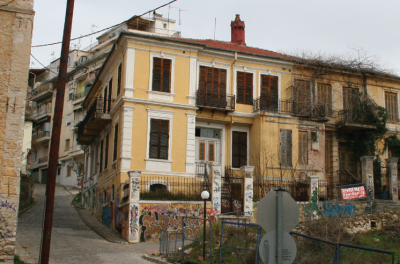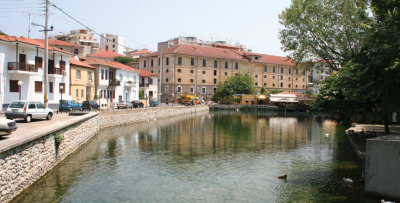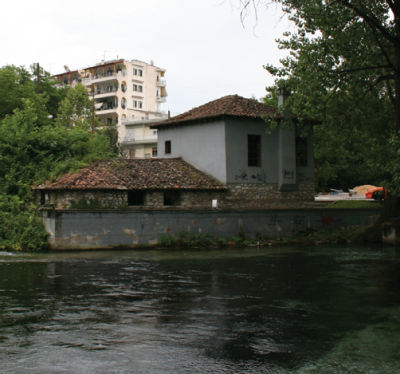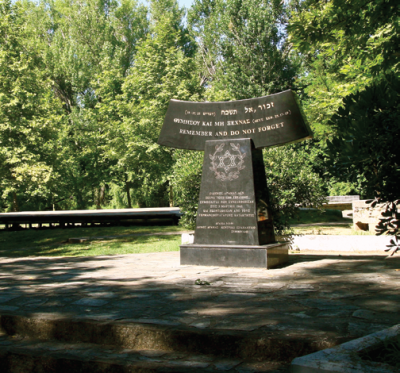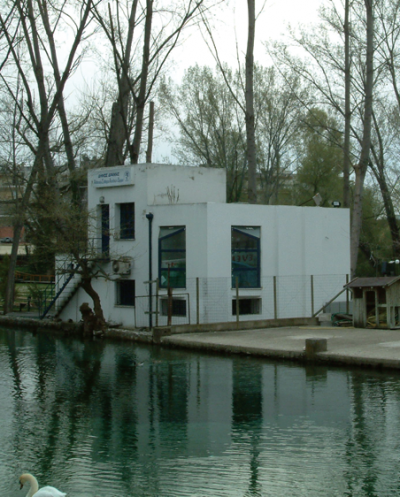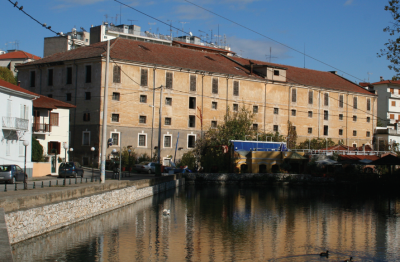Η ιστορία της Δράμας σε 360 λέξεις
Η Δράμα βρίσκεται στη συγκεκριμένη θέση από τα τέλη της 5ης π.Χ. χιλιετίας. Αυτό οφείλεται στα άφθονα νερά και τον πλούσιο κάμπο της. Ο προϊστορικός οικισμός εντοπίζεται στη θέση «Αρκαδικός». Οι κάτοικοι της προελληνικής Δράμας είναι Θράκες. Κατά τους Αρχαϊκούς Χρόνους η περιοχή επικοινωνεί εμπορικά με ελληνικές αποικίες των θρακομακεδονικών παραλίων. Περί τα μέσα του 4ου π.Χ. αιώνα ο Φίλιππος Β΄ εντάσσει την περιοχή στο βασίλειο της Μακεδονίας. Η Δράμα των ιστορικών χρόνων βρίσκεται πιθανότατα στη θέση της σύγχρονης πόλης. Τη λατρεία του θεού Διόνυσου πιστοποιεί πλήθος αρχαιολογικών ευρημάτων. Κατά τη Ρωμαϊκή Περίοδο η Δράμα προσαρτάται στη ρωμαϊκή αποικία των Φιλίππων, που ιδρύεται το 42 π.Χ. Στα Βυζαντινά Χρόνια είναι μια μικρή οχυρωμένη πόλη. Από τον 9ο έως τον 13ο αιώνα αποκτά εμπορικό και στρατηγικό ενδιαφέρον. Αναφέρεται ως Darma, Dramme και Dragmis. Από το 1206 έως το 1223/4 είναι στα χέρια των Λατίνων της Τέταρτης Σταυροφορίας. Από το 1345 έως το 1371 αποτελεί τμήμα του βασιλείου των Σέρβων. Το 1383/84 καταλαμβάνεται από τους Τούρκους. Από τον 18ο αιώνα αρχίζει στην περιοχή της Δράμας η καλλιέργεια του καπνού, που επιφέρει μεγάλη οικονομική ανάπτυξη. Την ανάπτυξη αυτή μαρτυρούν έως σήμερα οι καπναποθήκες και οι λαμπρές κατοικίες των καπνεμπόρων της. Στα χρόνια της αποκορύφωσης του Μακεδονικού Αγώνα μητροπολίτης Δράμας εκλέγεται ο μετέπειτα εθνομάρτυρας άγιος Χρυσόστομος Σμύρνης. Αυτός αναχαιτίζει τη δράση του βουλγαρικού κομιτάτου και φροντίζει για τη διάδοση της ελληνικής παιδείας ανεγείροντας μνημειακά σχολικά κτίρια στη Δράμα, το Δοξάτο, την Προσοτσάνη και αλλού. Η Δράμα καταλαμβάνεται από τους Βουλγάρους τον Οκτώβριο του 1912 (Α΄ Βαλκανικός Πόλεμος) και απελευθερώνεται από τον ελληνικό στρατό την 1η Ιουλίου 1913 (Β΄ Βαλκανικός Πόλεμος). Κατά τη διάρκεια του Α΄ Παγκοσμίου Πολέμου υφίσταται μια δεύτερη επώδυνη βουλγαρική κατοχή (1916-1918). Σε εφαρμογή της Συνθήκης της Λοζάνης (1923) πραγματοποιείται η Ανταλλαγή των Πληθυσμών. Αποχωρούν οι μουσουλμάνοι κάτοικοι της πόλης και έρχονται πρόσφυγες από τη Θράκη, τον Πόντο και τη Μικρά Ασία Στη διάρκεια του Β΄ Παγκοσμίου Πολέμου η Δράμα γνωρίζει και μια τρίτη βάναυση βουλγαρική κατοχή (1941-1944) που οδηγεί στη «σφαγή» των κατοίκων της πόλης και της περιφέρειάς της τον Σεπτέμβριο του 1941. Την ίδια περίοδο εξοντώνεται και το εβραϊκό στοιχείο της Δράμας. Σήμερα η πόλη αριθμεί 44.823 κατοίκους (Απογραφή 2011).
Πολιτιστική Διαδρομή
- Αρχαιολογικό Μουσείο
Το Αρχαιολογικό Μουσείο της Δράμας καλύπτει χρονικά την ανθρώπινη παρουσία στον Νομό μας από τη Μέση Παλαιολιθική Εποχή (50.000 χρόνια πριν από σήμερα) έως τους Νεότερους Χρόνους (το 1913). - Δημοτικός Κήπος
Ο Δημοτικός Κήπος της Δράμας είναι απομεινάρι από τα μεγάλα δάση που κάλυπταν την περιοχή στα αρχαία χρόνια και χαρακτηρίζεται από την άφθονη παρουσία του νερού και τα αιωνόβια πλατάνια του. - Άγιος Νικόλαος
Ο Άγιος Νικόλαος βρίσκεται στο κέντρο της πόλης, στη νοτιοδυτική γωνία της Πλατείας Ελευθερίας. Επί Τουρκοκρατίας λεγότανε Εσκί τζαμί (αρχαίο τζαμί) ή Τσαρσί τζαμί (τζαμί της αγοράς). Το αρχικό κτίριο είχε χτιστεί από τον Σουλτάνο Βαγιαζήτ Β΄ (1481-1512). - Πλατεία Ελευθερίας
Η Πλατεία Ελευθερίας πήρε τη σημερινή της μορφή μετά από πυρκαγιά η οποία γύρω στο 1915 έκαψε τις ξύλινες παράγκες που καταλάμβαναν τον χώρο της. Από την πλατεία ξεκινούσαν οι δύο βασικοί δρόμοι της πόλης, η οδός Βενιζέλου, η οποία οδηγούσε στο ελληνικό τμήμα της πόλης και η οδός Μεγάλου Αλεξάνδρου που οδηγούσε στις τουρκικές συνοικίες. - Μουσουλμανικό τέμενος (Άρμεν και Αγαμέμνονος)
Ονομάζεται Σαντριβάν τζαμί και είναι ένα από τα τέσσερα τεμένη που υπάρχουν σήμερα στη πόλη. Αξιόλογες για τη νεότερη ιστορία της πόλης είναι οι τοιχογραφίες που σώζονται στο προστώο που απεικονίζουν τη Δράμα (υπό μορφή παραδεισιακής 5 πόλης) από το τέλος της Τουρκοκρατίας. - Ελληνιστικός τάφος
Ο ελληνιστικός τάφος της οδού Τροίας 1 (2ος π.Χ αι.) αποτελείται από κτιστό κλιμακωτό «δρόμο», προθάλαμο και νεκρικό θάλαμο. Στον προθάλαμο σώζονται σημαντικές τοιχογραφίες με μίμηση της τοιχοδομίας, βούκρανα και εξάφυλλους ρόδακες. Στον νεκρικό θάλαμο διατηρούνται τρεις κτιστές σαρκοφάγοι. - Οθωμανικό σιντριβάνι (Πλατεία Δικαστηρίων)
Γύρω από το σημείο όπου βρίσκεται το σιντριβάνι υπήρχαν στα χρόνια της Τουρκοκρατίας τα δικαστήρια, το διοικητήριο, οι φυλακές και μαζί με το Αράπ τζαμί αποτελούσαν ένα σύνολο που χαρακτήριζε την περιοχή αυτή ως το διοικητικό κέντρο της πόλης. - Μουσουλμανικό τέμενος Αράπ Τζαμί
Το Αράπ τζαμί είναι κτίσμα λιθόκτιστο με ορθογώνια κάτοψη και με προστώο στη βορειοδυτική πλευρά, που έχει τρία αψιδωτά ανοίγματα. Στα χρόνια της Τουρκοκρατίας υπήρχαν και άλλα μουσουλμανικά τεμένη, λουτρά και μεντρεσές. - Οδός 19ης Μαΐου (πρώην Κένεντι) 9
Σημαντικός εμπορικός δρόμος της πόλης είναι η οδός 19ης Μαΐου, η οποία προήλθε από την κάλυψη του χειμάρρου Μοναστηρακίου στη δεκαετία του 1960. Ονομάζεται επίσης «το Τσάι» ή «το Ρέμα». Οι όχθες του χειμάρρου συνδέονταν παλιά με γέφυρες με μεγαλύτερη αυτήν της οδού Βενιζέλου (ίσως η «γέφυρα της Δράμας» του γνωστού οθωμανικού τραγουδιού). Συχνά το Τσάι ξεχείλιζε και γι’ αυτό τον λόγο έγινε η επικάλυψή του. - Οδός Βενιζέλου
Η οδός Βενιζέλου, έως τη δεκαετία του 1960, ήταν ο πιο κεντρικός και εμπορικός δρόμος της Δράμας. Η πόλη ξεκίνησε να χτίζεται γύρω από αυτόν τον δρόμο, που άρχιζε από την ανατολική πύλη της βυζαντινής πόλης και κατέληγε στη δυτική. Εδώ συγκεντρώνονταν τα πιο πολλά χάνια, τα εστιατόρια, τα ξενοδοχεία, τα καφενεία, οι ταβέρνες και ο κινηματογράφος της πόλης. - Ναός των Ταξιαρχών
Ο ναός των Παμμεγίστων Ταξιαρχών είναι χτισμένος στη θέση παλαιότερου ναού, υπολείμματα του οποίου είναι εντοιχισμέναστην τοιχοδομία του. Πρόκειται για μονόχωρη κεραμοσκεπή βασιλική και στο εσωτερικό του σώζεται αποσπασματικός ζωγραφικός διάκοσμος με μέρος του κύκλου των Παθών και τους Ταξιάρχες Μιχαήλ και Γαβριήλ, που χρονολογούνται στην πρώτη 20ετία του 14ου αιώνα. - Καφενείο «Ελευθερία»
Το καφενείο «Ελευθερία» χτίστηκε στις αρχές του 20ού αιώνα (1906-1907) από την Ελληνική Κοινότητα Δράμας στη συμβολή των σημερινών οδών Βενιζέλου και Κουντουριώτου. Μετά την απελευθέρωση της πόλης πήρε το όνομα «Ελευθερία». - Βυζαντινά τείχη – Χάνια
Στην οδό Κουντουριώτου, στα δεξιά, διακρίνεται ένα τμήμα των ανατολικών βυζαντινών τειχών, όπως και το πίσω μέρος των χανιών που η πρόσοψή τους βρίσκεται επί της οδού Βενιζέλου. - Βυζαντινά τείχη – Ωρολογόπυργος
Τα βυζαντινά τείχη της Δράμας χρονολογούνται στον 10ο αιώνα. Είχαν περίμετρο 850 περίπου μέτρων, δύο πύλες και πέντε τουλάχιστον πύργους. Σε πύργο της ανατολικής πλευράς υπήρχε το ρολόι της πόλης, που αφαιρέθηκε από αυτόν το 1945. - Ναός της Αγίας Σοφίας
Ο ναός της Αγίας Σοφίας είναι ο παλαιότερος σωζόμενος ναός της πόλης. Στη βυζαντινή περίοδο ήταν αφιερωμένος στην Κοίμηση της Θεοτόκου. Στη σημερινή του μορφή περιλαμβάνει τον βυζαντινό πυρήνα, που βρίσκεται σε βάθος δύο περίπου μέτρων κάτω από τη σημερινή επιφάνεια του εδάφους. Χρονολογείται γύρω στον 10ο αιώνα και αποτελεί μεταβατικό τύπο τρουλαίας βασιλικής με περίστωο. Παρουσιάζει τοιχοδομία ανάλογη με αυτήν των τειχών. - Αρχοντικό (οδός Αγίας Σοφίας)
Αυτό το μέγαρο, που χτίστηκετο 1926-1927. Πρόκειται για ένα σπάνιο και εξαιρετικό έργο τέχνης με στοιχεία νεοκλασικά. - Κινηματοθέατρο «Ολύμπια»
Το κινηματοθέατρο «Ολύμπια» βρίσκεται στην οδό Βενιζέλου. Ήταν ιδιοκτησία της ισραηλιτικής κοινότητας της Δράμας και λειτούργησε από τις αρχές της δεκαετίας του 1920 με την επωνυμία «Ο Μέγας Αλέξανδρος» ή «Μέγας». Το 1940 ονομάστηκε «Ολύμπια». - Παλαιά Μητρόπολη
H Παλαιά Μητρόπολη Δράμας σώζεται ακρωτηριασμένη δίπλα στον νέο μητροπολιτικό ναό και είναι αφιερωμένη και αυτή στα Εισόδια της Θεοτόκου. Διαδέχθηκε παλαιότερο ναό βυζαντινών ή πρώιμων μεταβυζαντινών χρόνων, ο οποίος ανακαινίστηκε το 1721 από τον μητροπολίτη Παρθένιο. Tυπολογικά ανήκει στις τρίκλιτες βασιλικές με δίρριχτη στέγη. - Εκκλησιαστικό Μουσείο
Το Εκκλησιαστικό Μουσείο φιλοξενείται σε ένα πενταώροφο κτίριο σε μια πτέρυγα του Επισκοπικού Μεγάρου Δράμας (τέρμα οδού Βενιζέλου). Ιδρύθηκε κατά την περίοδο της αρχιερατείας του Μητροπολίτη Διονυσίου Α΄. Οι εκκλησιαστικοί θησαυροί που εκτίθενται, προέρχονται από κειμήλια που έφεραν μαζί τους οι πρόσφυγες της Μικράς Ασίας και του Πόντου το 1922-1924. - Εκπαιδευτήρια της Ελληνικής Ορθοδόξου Κοινότητος Δράμας
Τα Εκπαιδευτήρια της Ελληνικής Ορθοδόξου Κοινότητος Δράμας βρίσκονται στην οδό Δημητρίου Γούναρη. Χτιστήκαν το 1908 από τον μητροπολίτη Χρυσόστομο με την οικονομική υποστήριξη των κατοίκων της Δράμας και της οικογένειας του Παύλου Μελά. Το κτίριο ολοκληρώθηκε το 1909. Τα Εκπαιδευτήρια αποτελούν σημαντικό μνημείο και μαρτυρία για τη δράση του Χρυσοστόμου στην περιοχή κατά τη διάρκεια του Μακεδονικού Αγώνα. Στη ΝΑ πλευρά του κτιρίου υπάρχει μαρμάρινος ανδριάντας του εθνομάρτυρα μητροπολίτη. - Αρχοντικό (Περδίκκα 10)
Το «Αρχοντικό». Είναι ένα ακόμα δείγμα της εκλεκτικιστικής αρχιτεκτονικής του τέλους του 19ου και των αρχών του 20ού αιώνα. - Καπναποθήκη
Στο τέλος του 19ου και τις αρχές του 20ου αιώνα η καλλιέργεια καπνού στη Δράμα γνωρίζει μια σημαντική ανάπτυξη, με αποτέλεσμα την ανέγερση νέων κτιρίων, των καπναποθηκών. Μια μεγάλη και εντυπωσιακή καπναποθήκη, έργο του Αυστριακού μηχανικού Konrad von Vilas, βρίσκεται στην οδό Περδίκκα 10. Είναι ένα από τα πιο σημαντικά σωζόμενα βιομηχανικά κτίρια της περιόδου της μεγάλης ακμής της Δράμας. Στις προσόψεις της καπναποθήκης είναι εμφανής η κεντροευρωπαϊκή επίδραση και στοιχεία της «Art Nouveau». - Αρχοντικό (Πλατεία Ταξιαρχίας)
Στην Πλατεία Ταξιαρχίας δεσπόζει ένα εξαιρετικό αρχοντικό που κατασκευάστηκε το 1925 από τον Konrad von Vilas. Αποτελεί ένα τέλειο παράδειγμα του εκλεκτικισμού με στοιχεία της κεντρικής και ανατολικής Μακεδονίας, αναγεννησιακά, μπαρόκ και στοιχεία από την κεντρική Ευρώπη. - Σοκάκια της Αγίας Βαρβάρας
Κάθετα στην οδό Περδίκκα και την οδό Βενιζέλου, υπάρχει ένα πλέγμα από στενά παλιά παραδοσιακά σοκάκια που οδηγούν στις πηγές της Αγίας Βαρβάρας και στην εκκλησία. Πολλά από αυτά ήταν έως το 1950 στρωμένα με κροκάλες. Στα σοκάκια αυτά σώζονται παλιά σπίτια μακεδονικού τύπου, αρχοντικά και καπναποθήκες. - Εκκλησία της Αγίας Βαρβάρας
Δίπλα στη λίμνη βρίσκεται η μικρή εκκλησία της Αγίας Βαρβάρας, πολιούχο της Δράμας, που γιορτάζει στις 4 Δεκεμβρίου. Την παραμονή της γιορτής τα παιδιά αφήνουν στα νερά των πηγών καραβάκια στολισμένα με κεριά, που ανάβουν προς τιμήν της Αγίας. Εδώ επίσης συγκεντρώνεται όλη η πόλη για την κατάδυση του Σταυρού την ημέρα των Θεοφανίων. - Περιοχή των Πηγών της Αγίας Βαρβάρας
Η Δράμα οφείλει την ιδιαιτερότητα της στα νερά των πηγών της Αγίας Βαρβάρας, που υπήρξαν διαχρονικό σημείο αναφοράς. Αυτά προσήλκυσαν τους προϊστορικούς ανθρώπους να δημιουργήσουν τον πρώτο παραλίμνιο οικισμό. Στην περιοχή υπάρχουν δύο δεξαμενές νερού χτισμένες από Ηπειρώτες τεχνίτες. Γύρω από τα νερά υπάρχουν καπνομάγαζα, που αποτελούν μνημεία της ιστορίας της Δράμας. Σήμερα ο χώρος αυτός είναι το κέντρο της πολιτιστικής ζωής. - Υδρόμυλοι
Ο μεγάλος αριθμός υδρόμυλων οφείλεται στην παρουσία άφθονων πηγών στην περιοχή της Αγίας Βαρβάρας. Στις αρχές του 20ού αιώνα υπολογίζεται ότι υπήρχαν δεκαπέντε υδρόμυλοι. Σήμερα απέμειναν, εκτός λειτουργίας πλέον, τρεις υδρόμυλοι στο νότιο τμήμα των πηγών. - Μνημείο Εβραϊκού Ολοκαυτώματος
Δίπλα στο υπαίθριο θεατράκι στήθηκε το 1999 «Μνημείο των Εβραίων Μαρτύρων του Ολοκαυτώματος». Στην καπναποθήκη Φ. συγκέντρωσαν στις 3 Μαρτίου 1943 οι Βούλγαροι τους Εβραίους της Δράμας όπου ξεκίνησε το μαρτυρικό τους οδοιπορικό προς το στρατόπεδο εξόντωσης Τρεμπλίκα II στην Πολωνία. - Κέντρο Ενημέρωσης Επισκεπτών (παλιό κτίριο του ΟΣΕ)
Στην καρδιά της περιοχής των πηγών της Αγίας Βαρβάρας βρίσκεται το «Κέντρο Ενημέρωσης Επισκεπτών» (παλιό κτίριο του ΟΣΕ). Το κτίριο αυτό κατασκευάστηκε το 1895 μαζί με το κτίριο του Σιδηροδρομικού Σταθμού και λειτούργησε επί έναν αιώνα ως αντλιοστάσιο προμηθεύοντας με νερό τις εγκαταστάσεις του ΟΣΕ. - Καπναποθήκη Έρμαν Σπήρερ
Η καπναποθήκη του καπνεμπόρου Έρμαν Σπήρερ (Herman Spierer) στη βόρεια πλευρά της μεγάλης λίμνης χτίστηκε το 1925. Η κατασκευή της, που οφείλεται στον Αυστριακό μηχανικό Κonrad von Vilas, έφερε μεγάλη αναστάτωση λόγω του τεράστιου όγκου της.
Άλλα αξιοθέατα πέρα από την πολιτιστική διαδρομή
Η συνοικία της Άγιας Τριάδας βρίσκεται στις βόρειες παρυφές της πόλης. Ονομάζεται έτσι από τον ομώνυμο ναό και την περίοδο της Τουρκοκρατίας ήταν κατοικημένη από μουσουλμανικό πληθυσμό. Τότε ο ναός ήταν τέμενος και ονομαζόταν Κουρσούμ (ή Κουρσουνλού) τζαμί. Το Ορφανοτροφείο (Κέντρο Προστασίας του Παιδιού Δράμας) είναι το παλιό τουρκικό γυμνάσιο (Ρουσδιέ). Χτίστηκε σε σχέδια του μηχανικού Konrad von Vilas πριν από το 1910 και βρίσκεται στη σημερινή οδό Ιπποκράτους. Σχολείο τουρκικό ήταν επίσης και το πρώην «Στρατιωτικό Νοσοκομείο» (ΚΙΧΝΕ).Το Γυμνάσιο Αρρένων, επιβλητικό διώροφο κτίριο, ένα από τα ωραιότερα σχολικά κτίρια της χώρας, είναι χτισμένο στο ΒΑ άκρο της πόλης της Δράμας, στο τέρμα της οδού Μητροπολίτου Χρυσοστόμου. Η κατασκευή του ξεκίνησε γύρω στο 1927-28 αλλά άρχισε να λειτουργεί μόνο από τις αρχές του 1935.
Ο ίδιος δρόμος που οδηγεί στο ορφανοτροφείο και στο Νοσοκομείο της πόλης οδηγεί και στον Λόφο του Κορυλόβου, που χρησιμοποιείται από τους Δραμινούς ως χώρος αναψυχής. Στην κορυφή του λόφου υπήρχε, κατά τη βυζαντινή περίοδο, μοναστηριακός ναός, όπως έχει αποδείξει η ανασκαφική έρευνα των τελευταίων ετών.
Η οδός Ευξείνου Πόντου οδηγεί στο «Πάρκο των Κομνηνών», που οφείλει την ονομασία του στον παλαιότερο ποντιακό σύλλογο της πόλης. Στο χώρο του πάρκου υπάρχει μνημείο για τη γενοκτονία των Ποντίων, καθώς και κοιμητήριο της ποντιακής κοινότητας. Ο Σιδηροδρομικός Σταθμός: το μεγαλύτερο σιδηροδρομικό δίκτυο στη Μακεδονία, στα τέλη του 19ου αιώνα, κατασκευάστηκε από την εταιρεία «Σύνδεση Θεσσαλονίκης-Κωνσταντινουπόλεως». Ο σταθμός της Δράμας, που οικοδομήθηκε το 1895 θεωρείται ένας από τους σημαντικότερους του ελληνικού δικτύου.
Η «Νίκη της Δράμας» βρίσκεται στη περιοχή της ανάπλασης του χειμάρρου της Καλλιφύτου, απέναντι από το Δημαρχείο της πόλης μας. Φιλοτεχνήθηκε το 2013 στο πλαίσιο του εορτασμού των 100 Χρόνων Ελεύθερης Δράμας από τον διεθνούς φήμης Δραμινό γλύπτη Παύλο Κουγιουμτζή.
Τα Αρχοντικά
Το τέλος του 19ου αιώνα συμπίπτει με μια εποχή έντονης οικονομικής και οικοδομικής ανάπτυξης. Μια καινούρια πλούσια αστική τάξη θέλει να χτίζει εντυπωσιακά ιδιωτικά μέγαρα. Το τελευταίο τέταρτο του 19ου αιώνα αρχίζουν να διαφαίνονται οι επιδράσεις του νεοκλασικισμού, αρχιτεκτονικού ρεύματος που επικρατεί στην Ευρώπη από τον 18ο αιώνα. Η αναζήτηση συνεργασίας με ξένους μηχανικούς-αρχιτέκτονες έφερε μερικούς σπουδαίους επαγγελματίες στη Δράμα όπως τον Αυστριακό μηχανικό-αρχιτέκτονα, Konrad Jacob Josef von Vilas, που συνέβαλε ενεργά στην κατασκευή κτιρίων εμπορικής χρήσης, όπως οι καπναποθήκες, αλλά και ιδιωτικών κατοικιών στη Δράμα. Πανέμορφα δείγματα αρχοντικών μπορούμε να θαυμάσουμε στην περιοχή της Αγίας Βαρβάρας και στις οδούς 25ης Μαρτίου, Κουντουριώτου, Γούναρι, Σκόρδα, Αβέρωφ, Αγίας Σοφίας, Βενιζέλου, Βορείου Ηπείρου και σε πολλά άλλα μέρη της πόλης.





